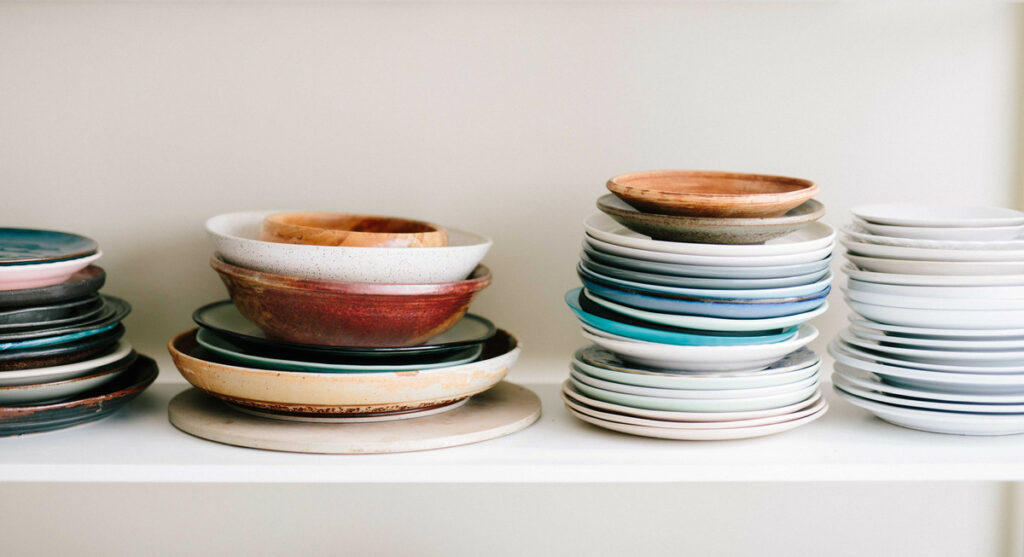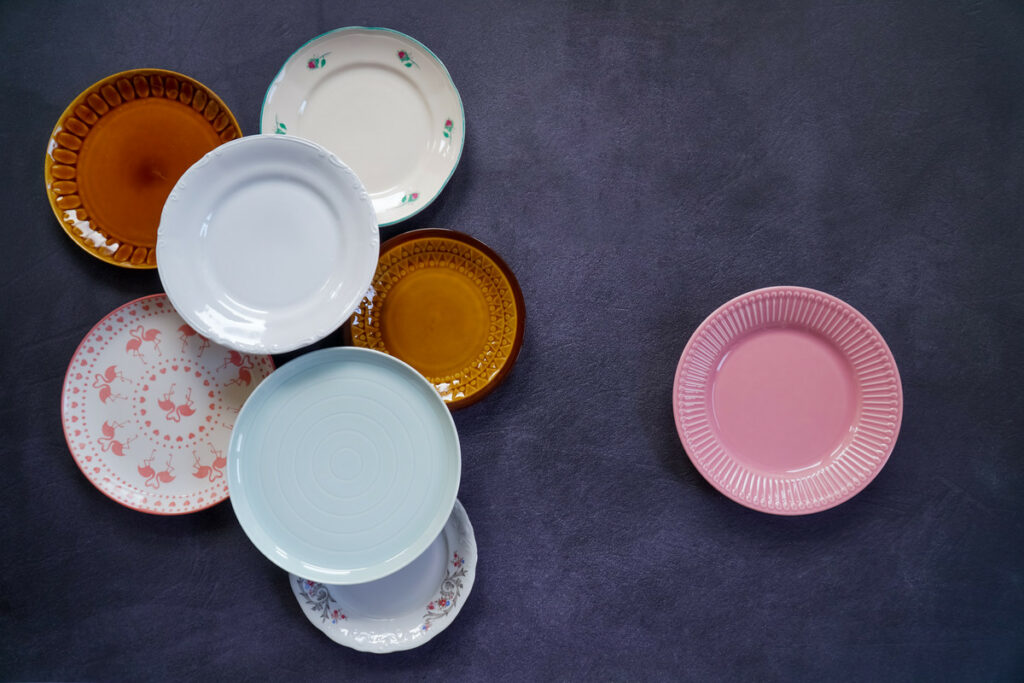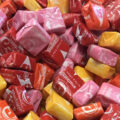
We’ve all been in the situation where our microwave is busted and we want to heat leftovers. While some food items can be safely heated using a stovetop, others require a more ingenious solution.
So then comes the question, what is the closest appliance to the microwave? That would be the oven.
But how do you reheat food in the oven? Do you put it in a baking tin or sheet? Or can plates go in the oven?
Great questions, continue reading below as we answer them.
So, Is It Safe To Put Plates In The Oven?

Most people think that it’s perfectly safe to put plates in the oven, but the truth is that it can be a bit risky. There are a few potential dangers that you should be aware of before you put your next dish in the oven.
First, the heat from the oven can cause the plate to crack or break. If this happens, shards of glass could end up in your food, which could be dangerous to eat.
Additionally, if the plate is not heat-resistant, it can melt in the oven, creating a fire hazard.
Finally, it largely depends on the type of material that the plate is made of. Some are oven safe, while others are not.
So, while you may be tempted to pop a plate in the oven, we will explain some of the common plate materials below and whether or not you should be placing them in the oven.
Metal Plates
Metal plates are durable and heat safe in most cases. Whether stainless steel, aluminum or cast iron, a plate that is made of metal, with no coating can be put in the oven to reheat food. Note that metal gets extremely hot in the oven, so you will need to be very careful when removing the plate from the oven. Oven mitts are highly recommended.
Ceramic Plates
While ceramic plates cannot withstand extremely high temperatures, they can hold up in the oven if a low moderate temperature is maintained. Ceramics require special consideration though, because you will need to be cautious with painted plates as the heat could cause the paint to melt and end up on your food.
Unpainted ceramic plates are thus the best option for reheating food. Again, be cautious when removing the hot plate from the oven.
Melamine & Other Plastics
This is a definite no for both the microwave and oven. While some plastics could hold up in the microwave, ovens get way hotter and will cause plastic and melamine items to melt even at the lowest temperature. Melting plastic also releases chemicals that could be toxic to your lungs if inhaled, so definitely skip the plastic plate.
Glass Plates
Glass is a common material used in cookware, and it’s no wonder why. Glass is non-porous, meaning it won’t absorb food particles or bacteria. It’s also heat-resistant, so it can withstand high cooking temperatures.
However, not all glass is created equal. Some types of glass are meant for oven use, while others are not. If you’re unsure about whether or not your glass plates are safe to use in the oven, check the manufacturer’s instructions.
In general, dishes made from tempered glass, such as Pyrex or Anchor Hocking, are safe for oven use.
Non-tempered glass plates are susceptible to thermal shock, this means they can shatter in the oven. Thermal shock tends to occur when there is a drastic change in temperature, for example, if you take something directly out of the fridge and pop it into a heated oven.
So if you’re wondering whether it’s safe to put your glass plates in the oven, the answer is “it depends.” Make sure to check the manufacturer’s instructions before using any type of glass cookware in the oven.
What Temperature Should You Put Plates In The Oven At?
Regardless of the type of plate you are using, a low temperature is ideal. So, a temperature of between 200 and 250 degrees is best. Because the temperature is so low, note that it will take a bit longer than it would in the microwave to heat up food.
Not taking into consideration the time needed for the oven to heat up, it will take you about 15 minutes to reheat food at a low temperature in the oven.
Disadvantages of Heating Plates In The Oven
The first drawback is the length of time it takes to heat food in a plate in the oven. If you are in a hurry, this is not the way to go. Altogether it will take about 20 minutes to properly heat food on a plate in the oven. The other major drawback to using this method is that the food might get dry because of how long it is heated.
The Takeaway
If you find yourself in a tight spot with no microwave to use, you can reheat your food on a plate in the oven.
Note, however, that not all plates can be used in the oven. Glass, ceramics and metal plates can be used in the oven, but plastics and melamine should be avoided at all costs. If you are in doubt about whether or not a plate can be used in the oven, check the underside to see if it has a heat rating or if it says it is microwave safe.
A plate that is marked as microwave safe should also be safe in the oven. When using plates in the oven, be reminded that it will not be a quick and easy process. In addition to the time it takes your particular oven to heat, it will take 15 to 20 minutes to adequately reheat a plate of food in the oven.



